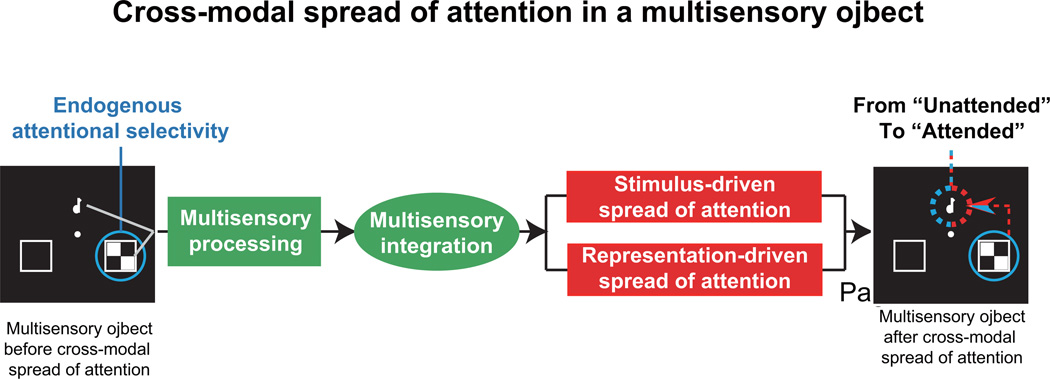Figure 6.
Processes of the cross-modal spread of attention within a multisensory object. As illustrated here, attention is focused on the visual modality to the right side by endogenous attentional selectivity. When the visual and auditory stimuli are presented simultaneously, they are processed in a multisensory manner. After low- and high-level multisensory processing, these stimuli are integrated into a coherent multisensory object. Within this multisensory object, attention can spread from the attended visual stimuli to the ignored auditory stimuli across modalities and locations, which occurs automatically. Moreover, the process of attentional spread across modalities and space involves dual mechanisms (Fiebelkorn et al., 2010). One mechanism is the stimulus-driven spread of attention, which is affected by spatial or temporal links between the auditory and visual stimuli (Donohue et al., 2011). The other mechanism is the representation-driven spread of attention, which is modulated by congruency when the multisensory stimuli must be checked in terms of matching or congruency (Zimmer et al., 2010a; Zimmer et al., 2010b). After these processing stages, the ignored auditory stimulus acquires attention from the attended visual stimuli. This entire process consists of endogenous attentional selectivity and the exogenous cross-modal spread of attention.

